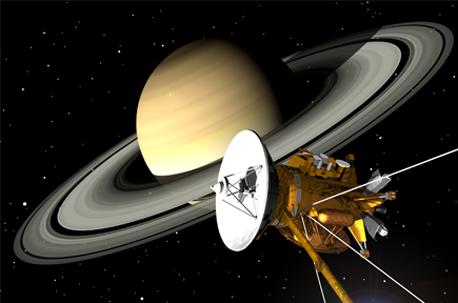
Bye Bye Cassini, the Tenacious Space Probe That Revealed Saturn’s Secrets
Cassini is the most sophisticated space probe ever built. Launched in 1997 as a joint NASA/European Space Agency mission, it took seven years to journey to Saturn. It’s been orbiting the sixth planet from the sun ever since, sending back data of immense scientific value and images of magnificent beauty.
Cassini now begins one last campaign. Dubbed the Grand Finale, it will end on Sept. 15, 2017 with the probe plunging into Saturn’s atmosphere, where it will burn up. ...
Massive storms periodically appear in Saturn’s cloud tops, known as Great White Spots, observable by Earthbound telescopes. Cassini has a front-row seat to these events. We have discovered that just like Earth’s thunderstorms, these storms contain lightning and hail.
Cassini has been orbiting Saturn long enough to observe seasonal changes that cause variations in its weather patterns, not unlike the seasons on Earth. ...
In 2010, during northern springtime, an unusually early and intense storm appeared in Saturn’s cloud tops. It was a storm of such immensity that it encircled the entire planet and lasted for almost a year. . . .
. . . Close encounters with Saturn’s largest moon, Titan, have allowed navigators to use the moon’s gravity to reorient the probe’s orbit so that it could swing over Saturn’s poles. Because of Saturn’s strong magnetic field, the poles are home to beautiful Aurorae, just like those of Earth and Jupiter.
Cassini has also confirmed the existence of a bizarre hexagon-shaped polar vortex originally glimpsed by the Voyager mission in 1981. The vortex, a mass of whirling gas much like a hurricane, is larger than the Earth and has top wind speeds of 220 mph.
. . .
The sixth-largest moon of Saturn, Enceladus, is an icy world about 300 miles in diameter. And for me, it’s the site of the Mission’s most spectacular finding.
. . . As Cassini passed over the moon’s southern hemisphere, it detected strange fluctuations in Saturn’s magnetic field. From this, the Cassini magnetometer team inferred that Enceladus must be a source of ionized gas.
. . . the two instruments designed to determine the composition of the gas that the spacecraft flies through . . . determined that Cassini was unexpectedly passing through a cloud of ionized water. Emanating from cracks in the ice at Enceladus’ south pole, these water plumes gush into space at speeds up to 800 mph.








